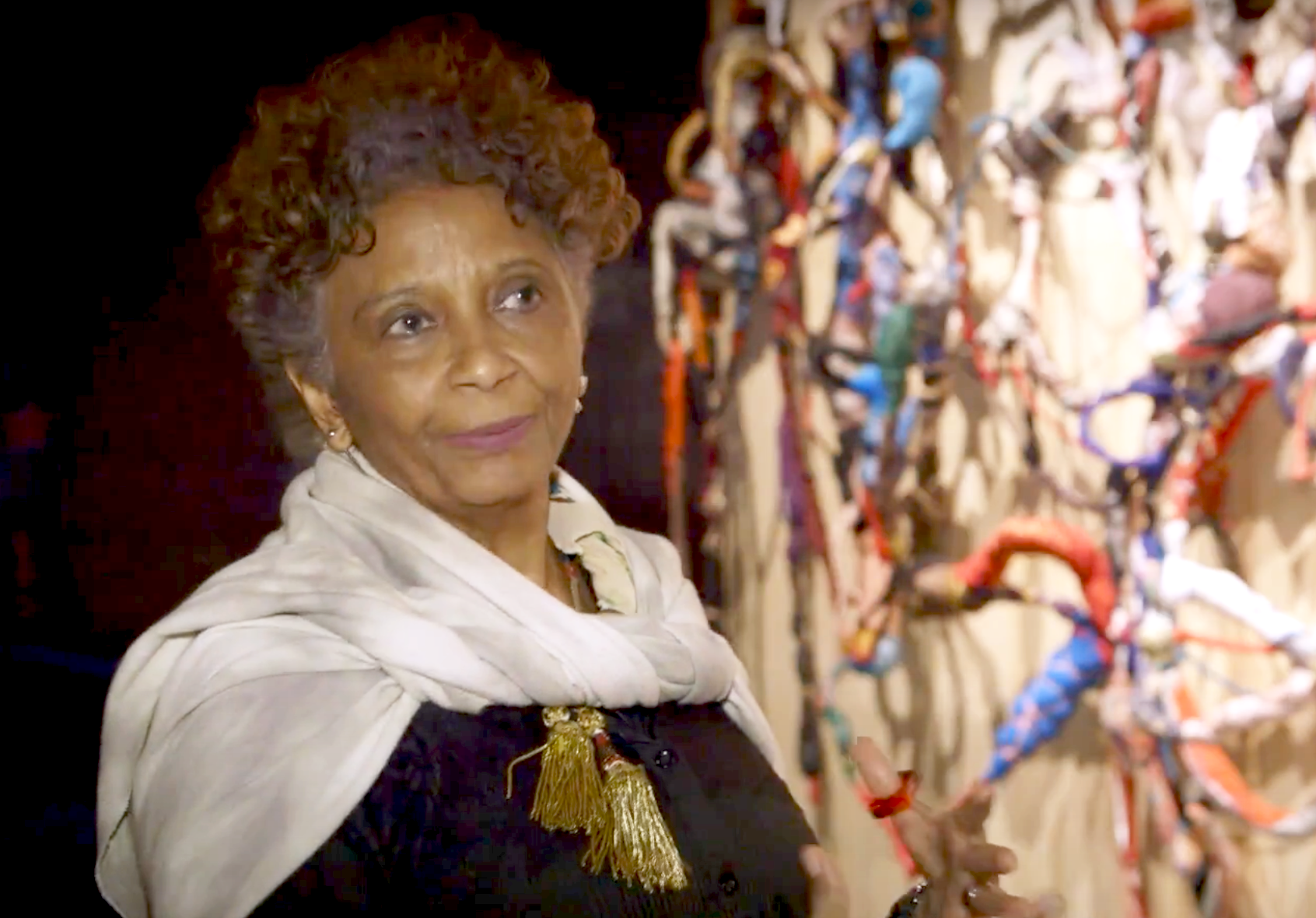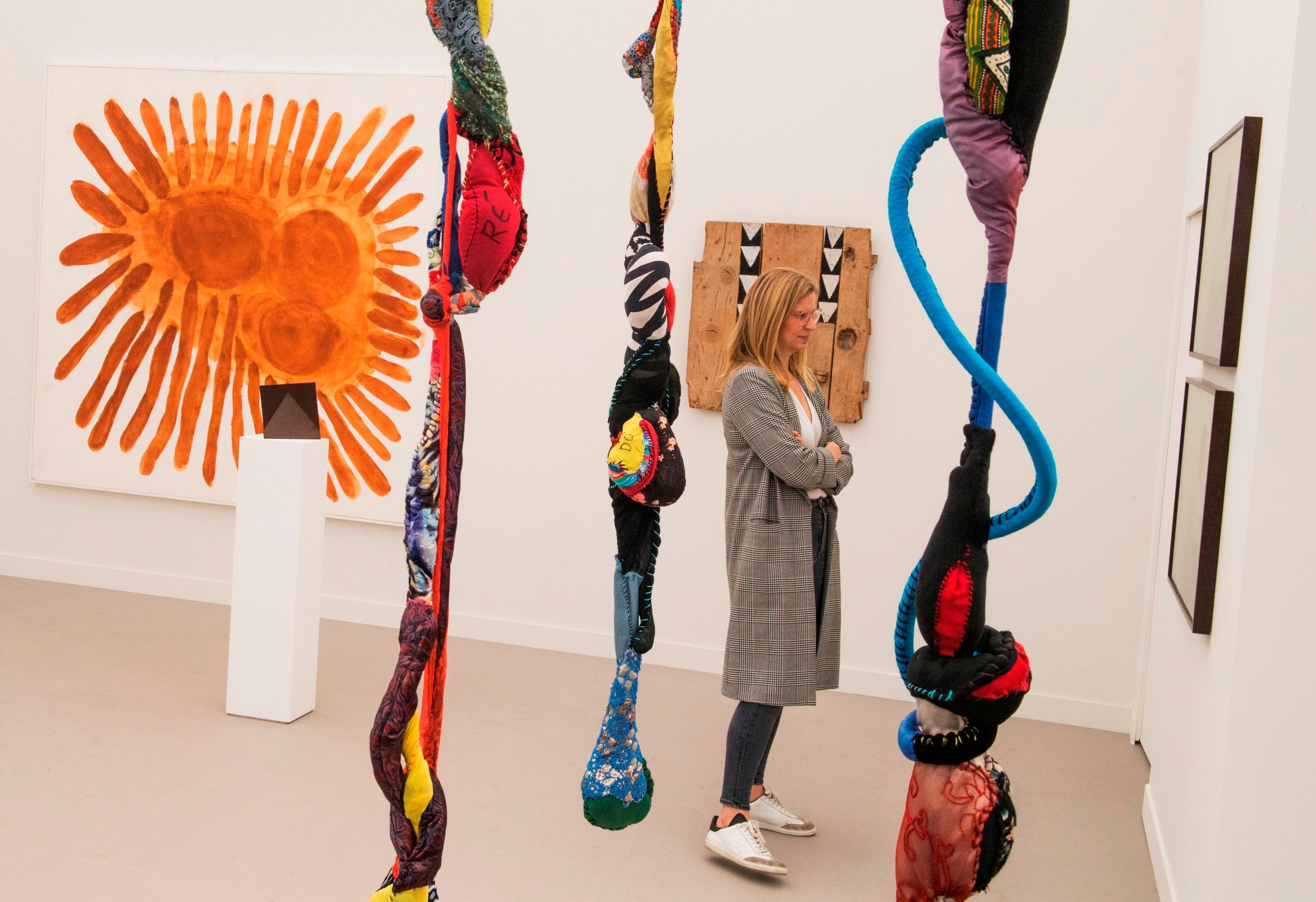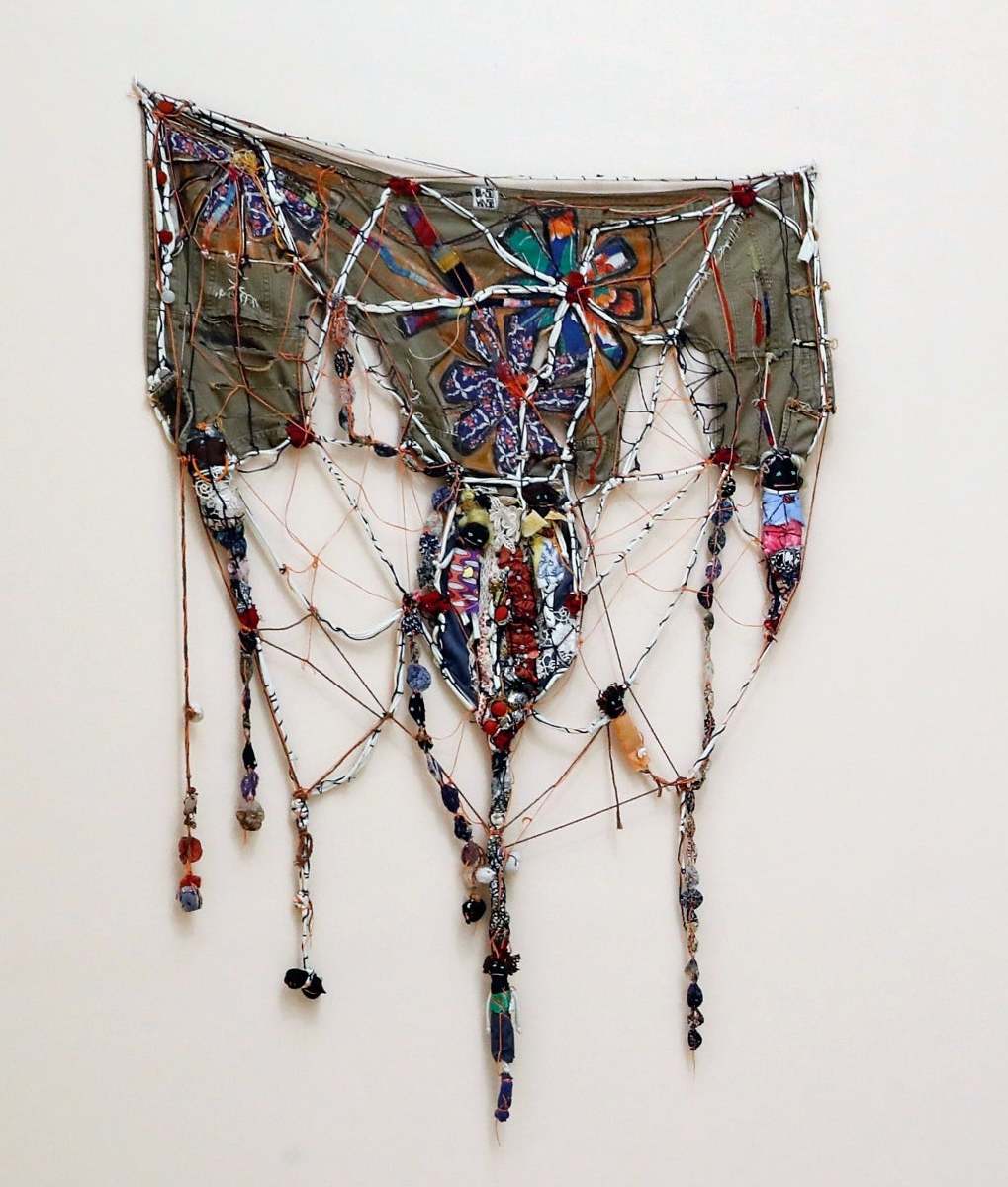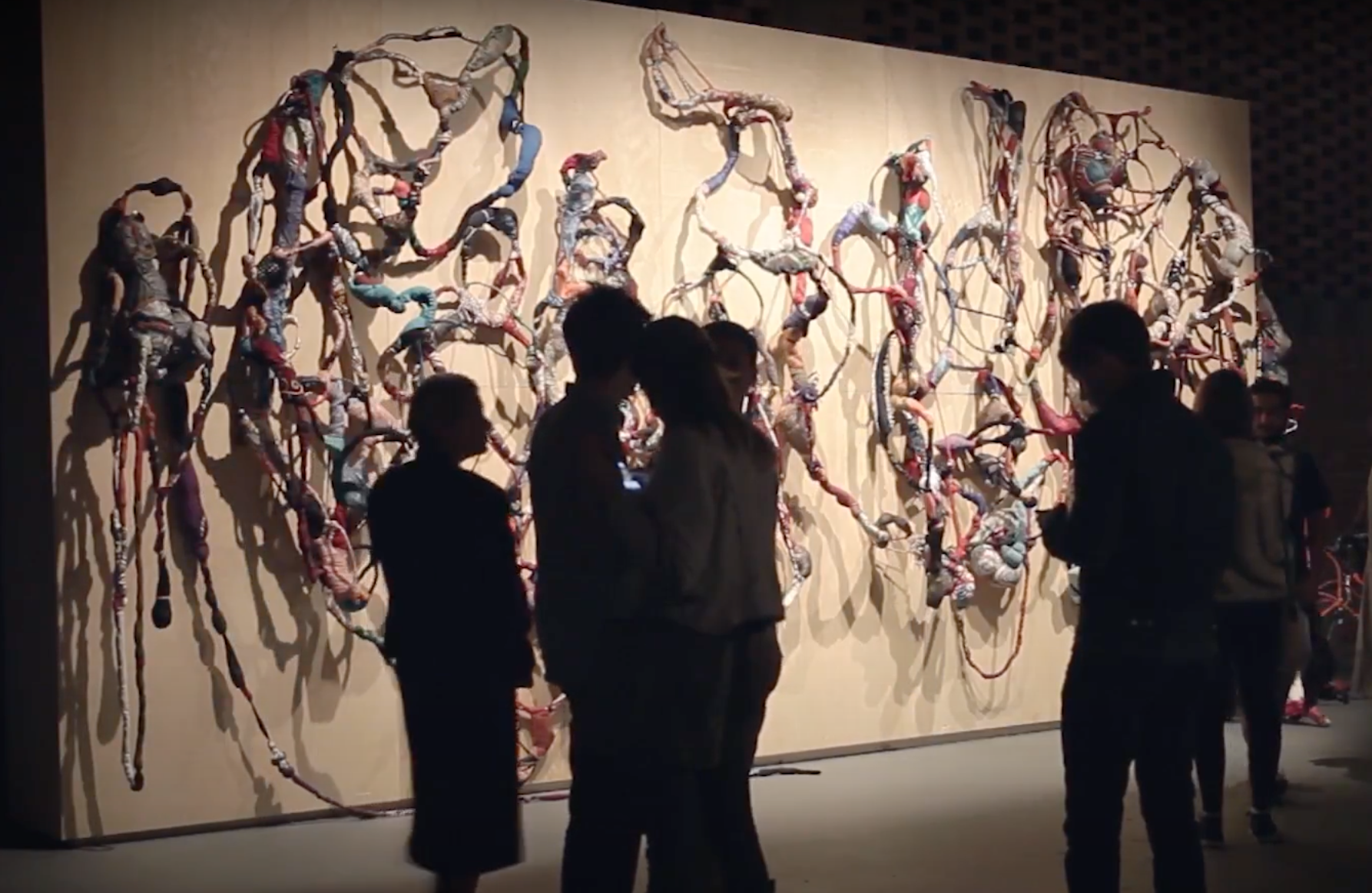The black Brazilian artist taking discarded materials and weaving them into powerful stories
Sonia Gomes twists and sculpts unwanted items to bring the painful inside out, and with, brings to light a culture that has been appropriated for years, writes Jill Langlois

Tucked away on a bottom shelf in Sonia Gomes’ studio there is a small cardboard box. Inside, two scarves – one woven in mustard-coloured cashmere and the other in a printed silk – are carefully folded. A handwritten letter sits on top.
“The thought that a small part of me could become a part of your work really inspires me and makes me smile,” it reads.
The scarves, from an admirer of her work, are gifts, like the other secondhand textiles stretched across the metal screens on Gomes’ studio walls and hanging from the hooks in its ceiling – an antique wedding dress in layers of cream lace and silk, a sky-blue tablecloth with white embroidered flowers that once belonged to a friend’s grandmother, fragments of gold lame that used to be parts of a Carnival costume – that she combines with everyday materials like furniture, driftwood and wire to create abstract sculptures. The materials were given to Gomes in the hope that she could twist, stuff or stitch them, giving each item a new significance as it becomes part of her work.
“Thank you for creating such honest work, which is part of you, but is also part of the world,” wrote the woman who sent the scarves, souvenirs from trips to Pakistan and China.
“I feel like people are saying to me, ‘give this new life, don’t let it die’,” Gomes says. “It’s something so precious to that person that they want it to become something bigger.”
For Gomes, 72, it’s that act of giving those materials new life that has helped her heal her own.
It took Gomes most of her life to realise that she had always been an artist. As a young girl growing up in Caetanopolis, a small town once known as a manufacturing hub for textiles, she liked to deconstruct her clothes and turn them into something different, using leftover fabric and found materials to make her own jewellery.
“It’s part of this rebelliousness that I’ve always had,” she says. “I still don’t like things that are predetermined, that say you have to do things or wear things a certain way.”
She was 45 when she left behind a career as a lawyer to attend the Guignard School, an art school in her home state of Minas Gerais. There she discovered that “not everything is art, but art can be anything,” she says, giving her the confidence to move forward with her work, which reclaims the Afro-Brazilian experience and culture, which continue to be diminished and appropriated in the last country in the western world to abolish slavery.

One of her assistants, Juliana dos Santos, also a black artist, sees the pain and suffering in the twists in Gomes’ sculptures, a representation of the racism she has faced throughout her life as a black woman in Brazil. The way the materials come together or are taken apart shows the tension between ideas of conflict and peace, and what Dos Santos interprets as the internal struggles Gomes dealt with because of the prejudice that followed her.
“Her work isn’t about sewing; it’s about bringing what’s inside out,” Dos Santos says. “It’s not immediate. It comes from within. She’s like a researcher. Her work is more about process than product.”
Gomes likes to let fabrics hang to better understand how they’ll look over time. Her process is tactile and she looks to the world immediately around her to draw influence, particularly from marginalised artists and artisans who have remained anonymous.
You can’t talk about Brazilian art without talking about black people. And we’re the ones changing things, with our persistence and our resistance
Her debut exhibition at Pace Gallery in East Hampton, New York, includes new works and sculptures from previous shows, like “Cordao dos Mentecaptos”, in which she contorts, wraps, stuffs and sews multicoloured fabrics into varying shapes, linking them together before hanging the finished piece from the ceiling. She has also collaborated on a new mixed-media piece with the painter Marina Perez Simao, who will be part of the September show. (Gomes’ first solo exhibition with Pace Gallery in Manhattan will take place in 2022.)
“She is the kind of artist that, when you see the work, you’re a believer rather than just an appreciator,” says Marc Glimcher, Pace Gallery’s chief executive. “She is like a conductor, and all of these objects and elements are the orchestra. It just resonates.”

As a black woman, Gomes says she is regularly expected to tell a certain story with her art and to follow what others think black art should be. But she refuses to be pigeonholed as an activist artist or to have her work branded as handicrafts, a term often used to diminish art made by artists who belong to marginalised groups.
When she left the Guignard School, Gomes struggled to survive with what she made. Because she allows her materials to tell her what they want to be and moves comfortably among different media, her pieces occupy a space that falls between what galleries consider fine art and what the handicraft world thinks would sell. But that doesn’t bother her.
“I don’t want to be trapped in any boxes,” she says. “It hinders my freedom.”
She also knows that working across media isn’t the only hurdle that leaves her art outside any conventional categories. As a black woman, she always knew the rules would be different for her. Gomes says more space is slowly starting to open up for black artists in Brazil, and it is because of the efforts of the black artist groups in the country. The young black people she sees in Sao Paulo, where she now lives and works, give her hope that those spaces will continue to multiply.
“You can’t talk about Brazilian art without talking about black people,” she says. “And we’re the ones changing things, with our persistence and our resistance.”
Her art gained recognition outside the country well before it started making waves in Brazil. Gomes was invited to participate in the 2015 Venice Biennale, and in 2017, her work was displayed at the National Museum of Women in the Arts in Washington and the Turner Contemporary in Margate, England, among others. Her first solo shows at well-known Brazilian institutions would follow. In 2018, her work was featured at the Niteroi Contemporary Art Museum and at the Museum of Art of Sao Paulo Assis Chateaubriand (Masp), where she was the first living Afro-Brazilian female artist to have a monographic show.

As her pieces began to reach a wider audience, they elicited a variety of interpretations, some that came as a surprise to Gomes. The moment she heard that her work felt like it was meant to heal, she realised that was exactly what it had done for her.
“While I was working, I was rethinking my entire life,” she says. “All the difficulties. I’ve never had any difficulties because I’m a woman. Because before being a woman, I’m black.”
For Gomes, what speaks to her is the history behind the individual materials that make up her art. As they come together, she not only tells her own story, but also the stories of everyone who came before her.
“Art, for me, was born through this necessity for expression,” she says. “Now, I feel like I have a voice.”
© The New York Times
Join our commenting forum
Join thought-provoking conversations, follow other Independent readers and see their replies
Comments